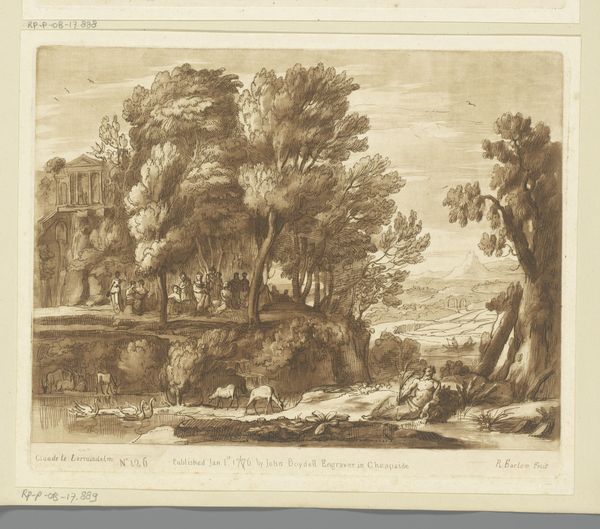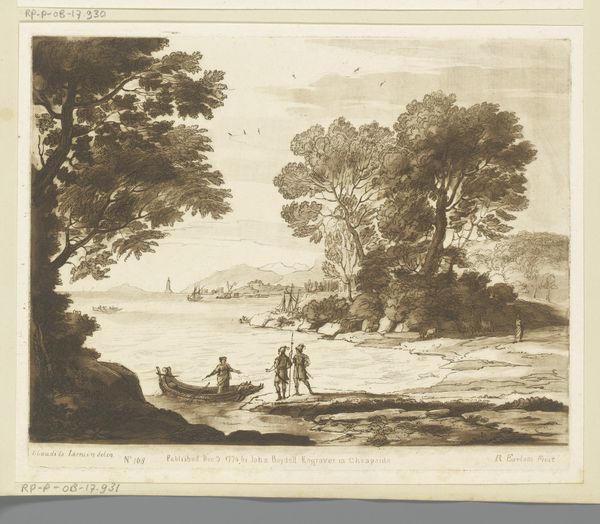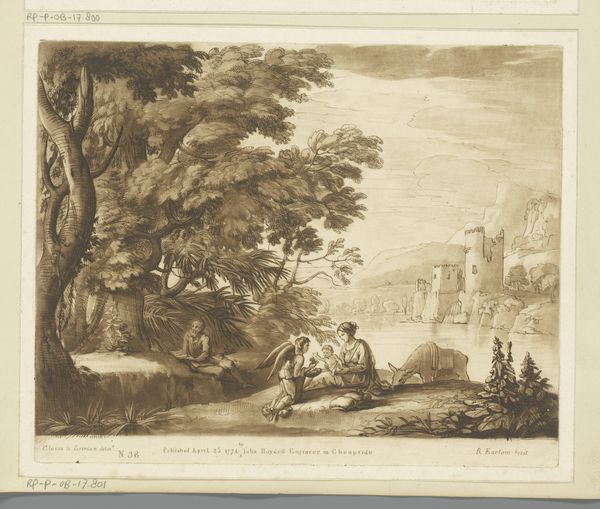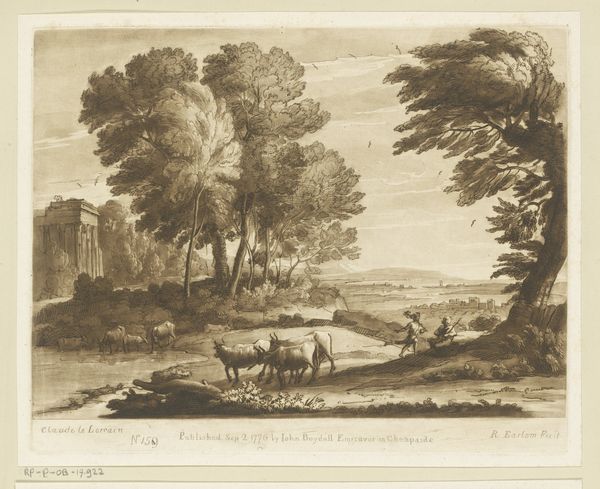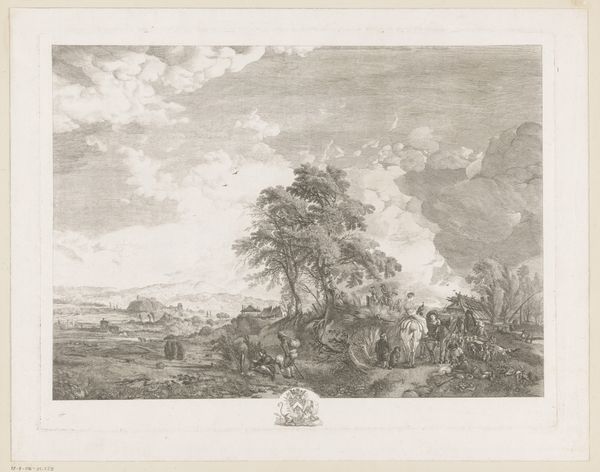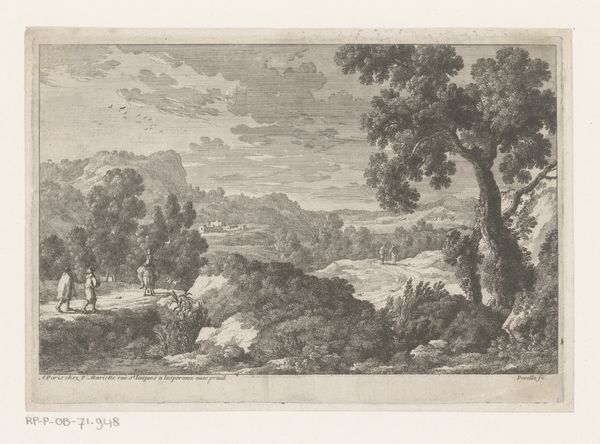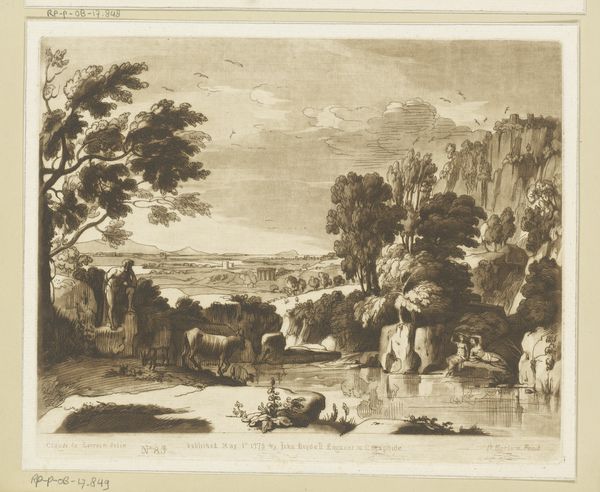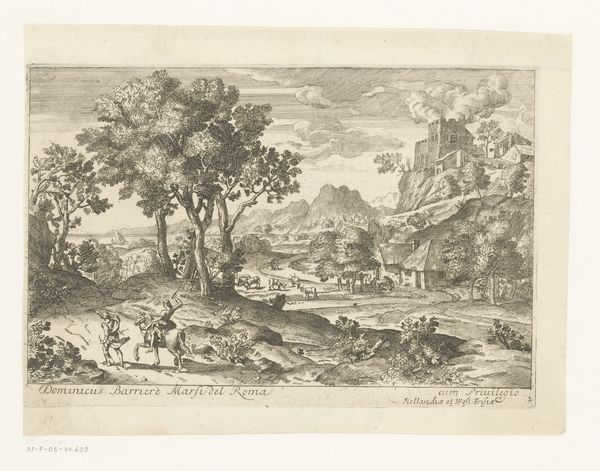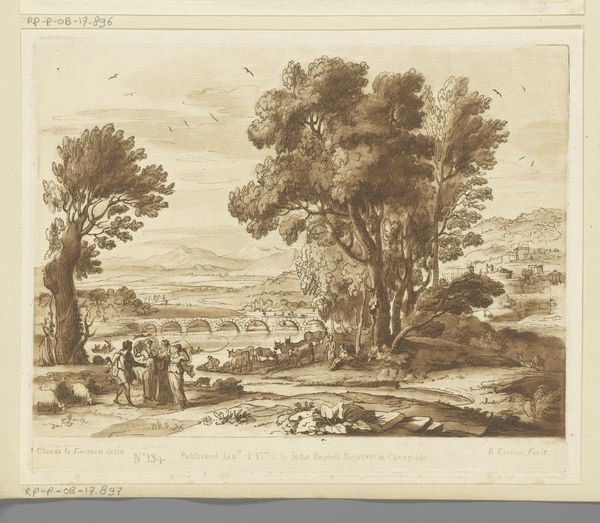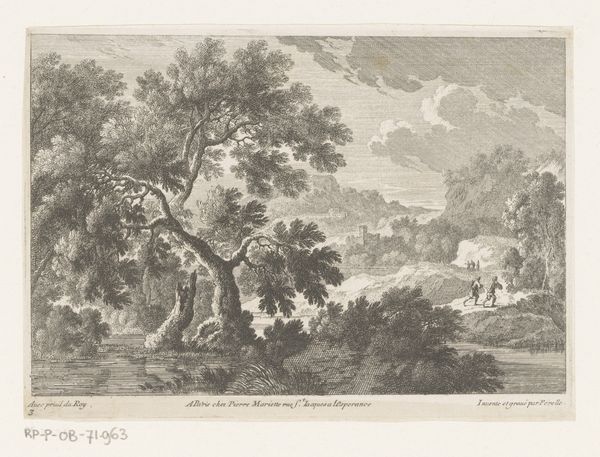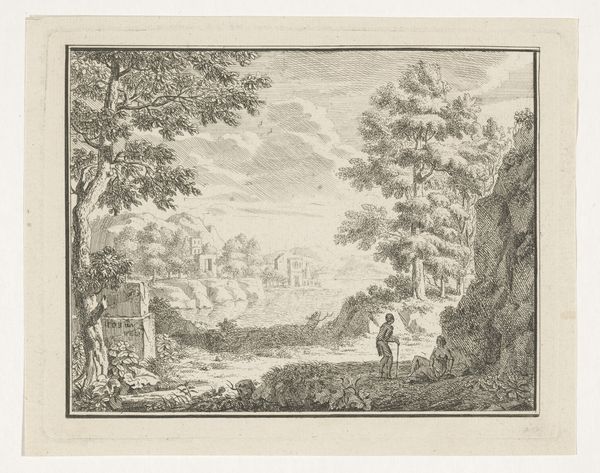
Landschap met drie figuren aan een rivieroever en kasteel op een heuvel Possibly 1775 - 1779
0:00
0:00
richardearlom
Rijksmuseum
#
pencil drawn
#
aged paper
#
toned paper
#
light pencil work
#
homemade paper
#
yellowing background
#
parchment
#
pencil sketch
#
pencil work
#
watercolor
Dimensions: height 206 mm, width 257 mm
Copyright: Rijks Museum: Open Domain
This landscape with figures, dating from 1774, is by Richard Earlom, an English printmaker known for his reproductions of other artists' works. This one after Claude Lorrain. Look closely, and you’ll see how Earlom masterfully used etching – a chemical process involving acid to bite lines into a metal plate – and mezzotint, which creates tone through tiny dots. These methods, though reproductive, demanded incredible skill. Earlom's labor-intensive approach is quite telling. In a pre-photographic era, printmakers like Earlom played a vital role in disseminating art. They made art accessible to a wider audience, democratizing it. The tones you see, the atmospheric quality that emulates painting, comes not just from Earlom's eye, but from the demanding mezzotint process. It required hours of meticulous work. Recognizing the labor embedded in this image helps us appreciate the ingenuity and artistry involved, and the social function of printmaking in its time.
Comments
No comments
Be the first to comment and join the conversation on the ultimate creative platform.
